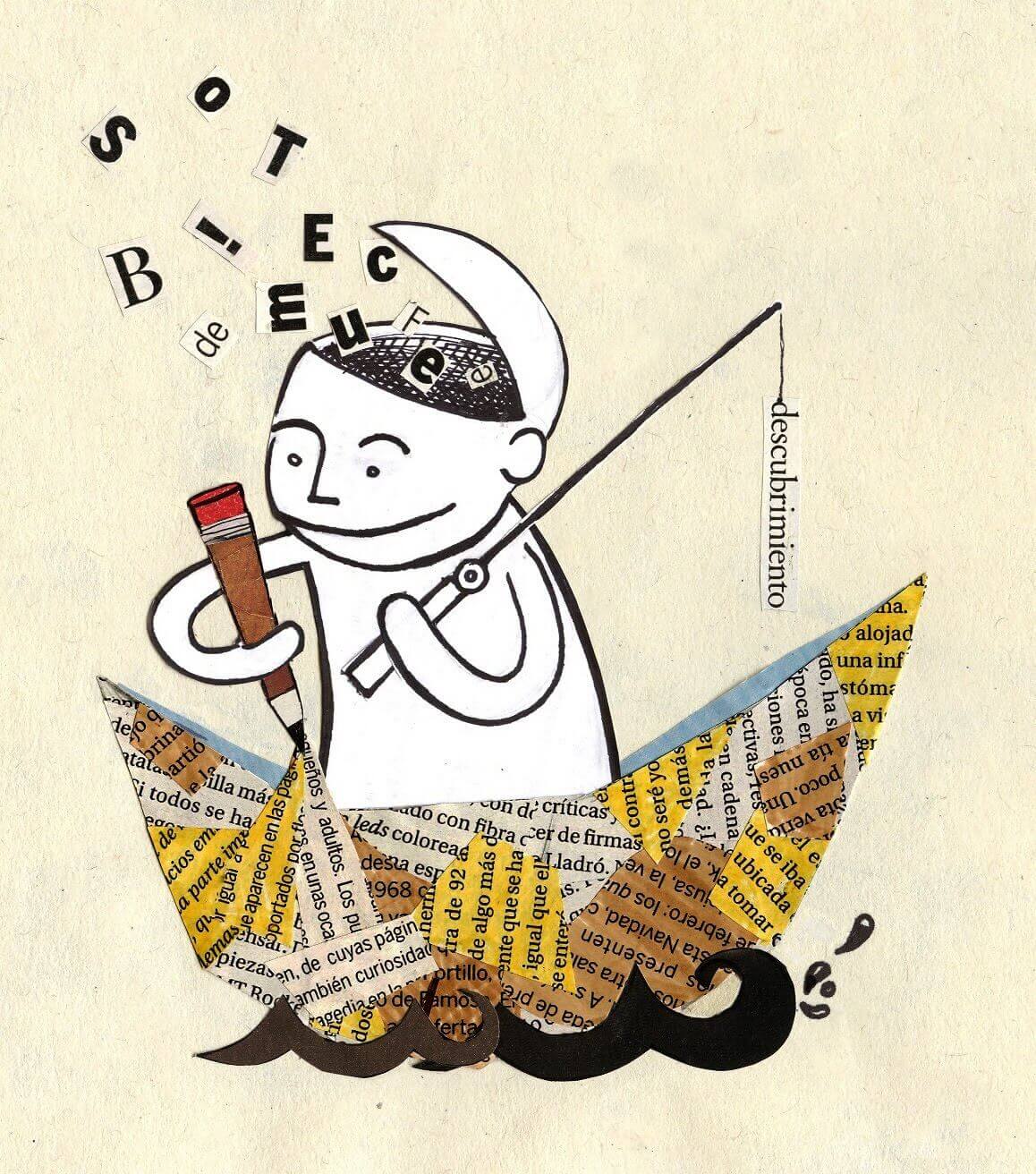What do you Know about Narrative Therapy?

Narrative therapy uses the narrative mode with therapeutic objectives. The narrative mode uses a point of view and a narrative voice for the presentation of a literary or theatrical history. This narrative mode is a respectful and non-blaming approach. It should follow the maxim: people are experts in their own lives (Morgan, 2004).
As we have said, narrative therapy seeks to create a respectful, non-blaming approach to therapy and community work. In addition, it sees the problem as a separate entity from the patient. It also assumes that people have many skills, competencies, convictions, values, commitments, and abilities that will assist them in reducing the negative influence of the problem in their lives.
“Language is a good indicator of how you see yourself.”
-Stephen R. Covey
Narrative means events linked in a sequence, through time and according to a theme. As humans, we interpret, or give meaning to our daily experiences. We look for ways to explain events and give them meaning.
This meaning is what gives form to our story, our narrative. We all have many stories about our lives and relationships. We have, for example, stories about ourselves, our abilities, difficulties, competences, actions desires, work, successes, and failures. The way in which we have interpreted and given meaning and order to these experiences has an effect on how we continue to write our story.
“Basically, the externalization of a problem consists in the linguistic separation of the problem concerning the patient’s personal identity.”
-Ivan Castillo Ledo
We speak of a succession of events united by a temporal thread. The thread we pick is based on what fits better with the idea of dominant history. Those threads that do not fit in mainstream history remain hidden or with less meaning (or a modified meaning) in light of the dominant theme.
For example, if I have a dominant story in which I am a good driver, every time I follow traffic signals, I give that story meaning and it reinforces the conclusions of the story. The day they fine me, as it does not agree with the dominant story, that memory becomes hidden or minimized because it does not fit with my general story.

What are the main objectives of narrative therapy?
So, the main objective of narrative therapy is to offer the person space to define his or her own life according to an adaptive narrative mode (which is good for him or her). The secondary objectives are the following:
- Incorporate new elements into the narrative of people.
- Help the person build a better future.
- To be able to share these new meanings with our environment, thus facilitating a new relational dimension.
People are storytellers
It may seem strange, but all human beings are storytellers. We have stories that we tell others and ones we tell ourselves. In addition, there is usually a lot of truth in each story, as well as some inventiveness.
We are born with a narrative impulse. Thus, we socialize and create the development of the self and establish an autobiographical memory that gives us meaning. Personal narrative is how we explain our own lives. We are the ones who create our world and, therefore, we are responsible for the reading we make of it.
“Self-regulation is an explanation that an individual presents of the relationship between self-reflecting events over time.”
-Gergen
This offers us the opportunity to mark the first difference between the problem and the person. From this difference comes a great opportunity, that of the person valuing their own resources and analyzing the problem from another perspective. The story of the person will be presented through linked events with the corresponding interpretation we make of them. From there, a narrative voice and a storyline will be established on which the patient and therapist can intervene.
Likewise, as part of the narrative therapy, in the narrative itself, we decide what we consider and what we discard in our history. Our own personal story will be influenced by sociocultural factors, as well as by more individual ones, such as our genetics.
Language is more important than you think
Language is the tool we use to create (or re-create) and present ourselves. It is also useful to manage our inner world of thoughts and feelings, hence the importance of the analysis of this language. If we create our reality from the explanations we give about it, this narrative will define what are called the “effects of the dominant story.”
These effects are those that are derived, for example, from the tone of our most global or general story. Thus, if ours is a story of abandonment and loss (written and told by us), the effect of this dominant story will be melancholy.
“Our personal story is influenced by sociocultural factors, as well as educational and personal ones.”
-Leila Nomen Martin
The therapeutic process of narrative therapy
The position of the therapist in this model will change from expert, to companion of the person asking for help, to co-other of the therapeutic process (White, 2004).
The idea narrative therapy is basically to be able to find an alternative story. A deconstruction of the dominant narrative story in favor of a renewed and different story.
The reflection is in favor of this new narrative, looking for what we call isolated achievements. These are those that give us the opportunity to introduce new information and/or focus. Therefore, they give us the opportunity to build a new history and/or identity.

This technique is both very simple and extremely complicated. It is simple in the sense that it represents a linguistic separation from the problem of the patient’s personal identity. The complicated and difficult part is the delicate way in which this is achieved. It is through the careful use of language in the therapeutic conversation that the healing of the person is initiated and finally achieved.
The novelty of the narrative approach is that it provides a useful sequence of questions that consistently produce a liberating effect for people. Following this therapeutic sequence is like building an arch brick by brick. If you try to reach the last step without having patiently put in the first bricks, the arch will not hold.
Technical description of narrative therapy
We assume that our life is the way it is, but we can always rethink it in another way. In the end, each person can rewrite their story as they wish (Garcia-Martinez, 2012). There are three dimensions around the narrative matrix that make a coherent, complex, narrative possible. Or even a series of narratives (Goncalves, 2002):
- Narrative structure: construction of a meaning of one’s experiences through a process of connection through the different narrative episodes of our lives. The structure is constituted of:
- A beginning, which is the point from which we begin our story. We can take the example of a client who comes to the consultation for the first time and does not know where to start. One of the therapist’s responses could be “from the beginning” or “from where it’s easier to start explaining your story” (this will be the beginning).
- Story development. This includes specific events, internal responses, the objectives of the protagonists, the actions that these protagonists take, the cause and effect and, finally, the context.
- An end, which is considered when obtaining certain results and/or a closing of the narrative
- Narrative process: this has to do with the way we explain our lives. That is, the tone we put on our lives (for example, dramatic engagement).
- Narrative content: refers to the diversity and multiplicity of narrative production, or the themes and plots we have. Sometimes we might fall into a “broken record” mode, ruminating over old unsolved themes.

Narrative technique exercises
The first step to changing our internal dialogue:
Internal dialogue is interrupted the same way it begins, by an act of will. You are the person you say you are, but you could change if you start talking differently (Castaneda, 1994). You can tell yourself that you are different. Allow me to present a series of exercises to work with internal dialogue. That voice that continuously speaks to us and translates reality:
- Know your internal dialogue: pay attention to the form and content of your internal dialogue. Think if this is a destructive or constructive dialogue, uneasy or serene. In short, negative or positive. To change it, we must first know its content, the most frequent thoughts we dedicate to ourselves.
- Formulate the right questions: analyze the situation that arises by changing the questions one asks of oneself. For example, instead of asking “why did this happen to me?”, we can ask ourselves “what can I learn from this situation?”.
- Change the focus: you can change the way we talk to yourself. It can help to start talking to yourself as a loving mother talks to a child. Incorporate warm and friendly words into your internal dialogue.
Personal narrative tools
There are many resources available to explore aspects of our narrative. These include metaphors, stories or therapeutic letters, and others. Let’s look at some of these resources now:
Resources to know oneself
- Life stories: stories intended to give meaning or justify a certain vision of events.
- Small tour around oneself: it is about imagining and writing a letter to a person with whom we have not contact for a long time.
- Ten years later: a description of how you see yourself in ten years. A description of how you will be physically, internally, at work, relationships with others, and hobbies.
- Preferences: think and write what are your preferences. Reaffirm and grant yourself the pleasure of expressing freedom through your own choices.
- Spaces: divide a grid into different spaces and dedicate each to an important person in your life, a significant place, the happiest events, and the most pleasant sensations. Also include your biggest dreams and the relationships that have made you mature and grow.
- I remember. . .: the person is invited to finish this sentence without thinking too much about the answer. You can use as many incomplete sentences as you want to explore and work with.
- Loving the mystery: it is about looking inside ourselves for those questions that have no answer.

Metaphors and stories
A metaphor is a linguistic form that makes an implicit comparison between two different entities. A dramatic resource that captures attention and provides an altered framework through which the client can consider a new experience (Lankton and Lankton, 1983).
There are three types of metaphors used in the therapy process:
- Those that refer to personal experiences of the therapist.
- Those that refer to obvious truths.
- Stories adapted to the person’s circumstances.
Therapeutic metaphors can be used to formulate an opinion, suggest solutions, access and use resources or personal knowledge, plant specific ideas, etc.
On the other hand, stories are expressions of essential philosophical truths, explanations of nature, or dream stories. The stories are therapeutic because the person has the possibility to find their own solution through the way they rewrite their story and the conflicts that appear in it.
The story does not refer to the outside world, although it can be realistic enough and have everyday features woven into it. The unreal nature of these stories is an important factor, since it makes obvious that the reason for these stories is not useful information about the external world, but the internal processes that occur in the individual (Gordon, 1978).
In short, when we tell our personal stories to strangers, we get rid of them and turn them into a past. This allows us to start designing a future of our liking, documenting those stories so they do not get lost in oblivion and can sere as an inspiration. The ultimate goal is for people to understand the power of the way they tell and what they tell, and how those things influence the way we behave now.
Bibliography:
White, M. (2002) “El enfoque narrativo en la experiencia de los terapeutas”. Gedisa.
Nomen Martín, L. (2016) “50 técnicas psicoterapéuticas”. Pirámide.
All cited sources were thoroughly reviewed by our team to ensure their quality, reliability, currency, and validity. The bibliography of this article was considered reliable and of academic or scientific accuracy.
- Cevasco, J. y Acosta Buralli, K. (2023). Construcción de la Coherencia en la Comprensión de Narrativas: Estudios acerca de la Importancia del Establecimiento de Conexiones Causales, Brechas en la Investigación Actual y Futuras Direcciones. Papeles del Psicólogo – Psychologist Papers, 44(1). https://www.papelesdelpsicologo.es/pii?pii=3010
- Losada, A. V. y Faga, M. (2022). La terapia narrativa como intervención en jóvenes víctimas de abuso sexual infantil. Subjetividad y Procesos Cognitivos, 26(1), 22-52. https://dialnet.unirioja.es/servlet/articulo?codigo=8594371
- Malkomsen, A., Røssberg, J. I., Dammen, T., Wilberg, T., Løvgren, A., Ulberg, R. & Evensen, J. (2021). Digging down or scratching the surface: how patients use metaphors to describe their experiences of psychotherapy. BMC psychiatry, 21(1), 1-12. https://www.ncbi.nlm.nih.gov/pmc/articles/PMC8555134/
- Nomen Martín, L. (2016). 50 técnicas psicoterapéuticas. Pirámide.
- Seo, M., Kang, H. S., Lee, Y. J. & Chae, S. M. (2015). Narrative therapy with an emotional approach for people with depression: Improved symptom and cognitive‐emotional outcomes. Journal of Psychiatric and Mental Health Nursing, 22(6), 379-389. https://pubmed.ncbi.nlm.nih.gov/25753316/
- White, M. (2002). El enfoque narrativo en la experiencia de los terapeutas. Gedisa.
This text is provided for informational purposes only and does not replace consultation with a professional. If in doubt, consult your specialist.








